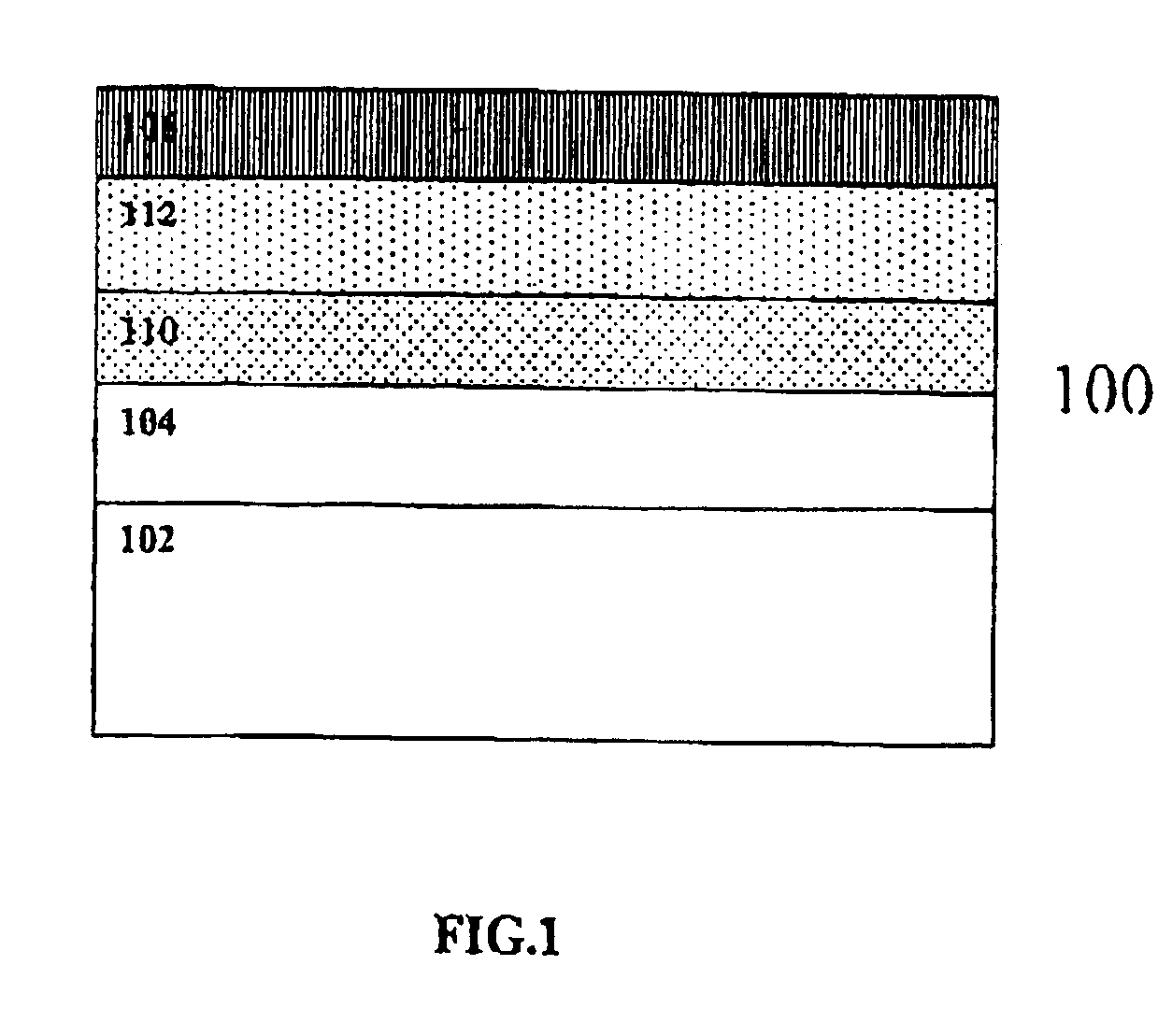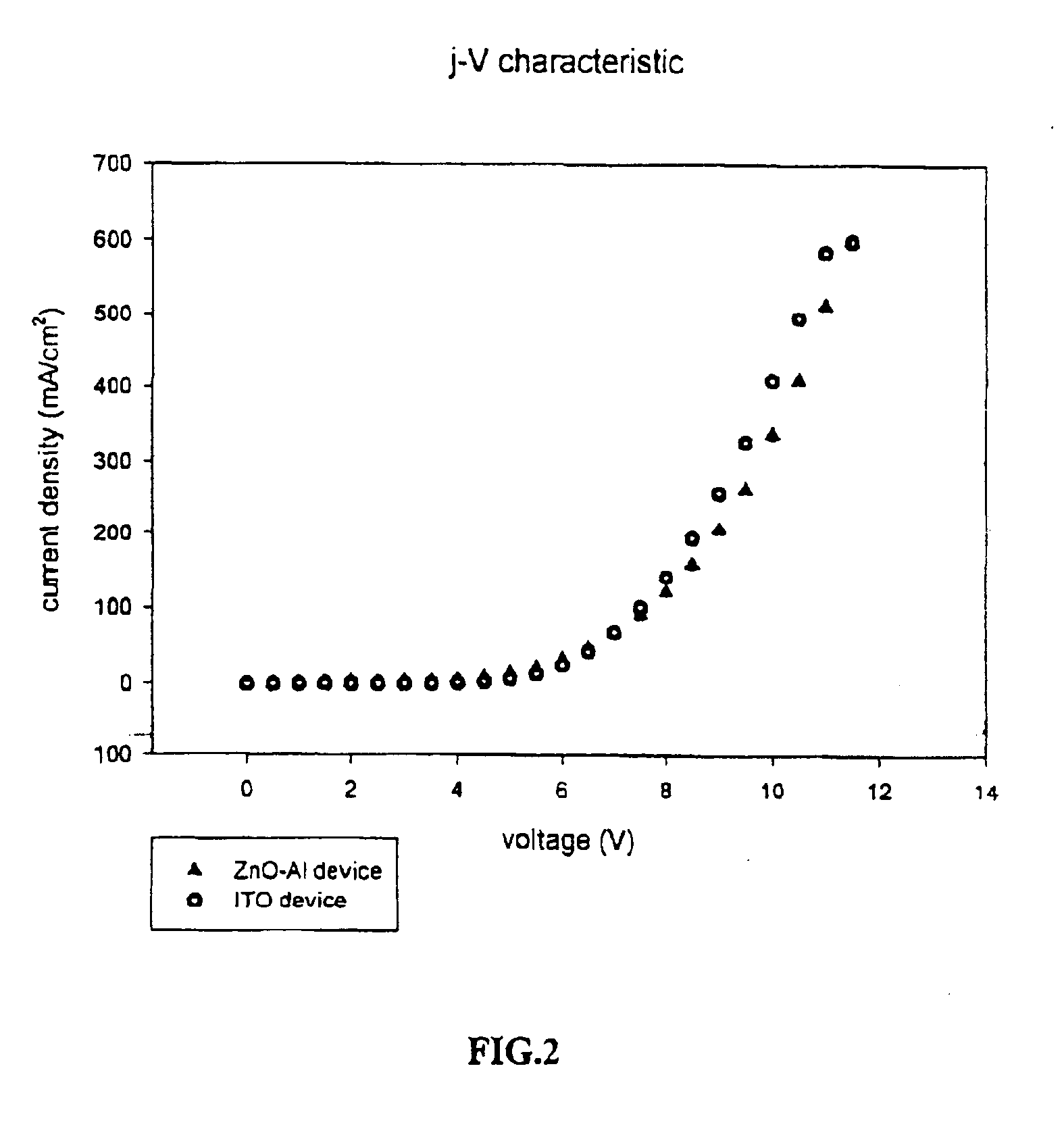High-qualty aluminum-doped zinc oxide layer as transparent conductive electrode for organic light-emitting devices
a technology of transparent electrodes and zinc oxide, applied in the direction of discharge tubes/lamp details, discharge tubes luminescnet screens, coatings, etc., can solve the problems of low chemical stability in a reduced ambient, the most challenging task, and the cost of ito production, etc., to achieve long-term stable and high-performance leds
- Summary
- Abstract
- Description
- Claims
- Application Information
AI Technical Summary
Benefits of technology
Problems solved by technology
Method used
Image
Examples
example
(Glass / ZnO-AL / NPB(700 Å) / Alq(550 Å) / MgAg(1500 Å))
[0030]An EL device satisfying the requirements of the invention was constructed in the following manner.
[0031]a) A patterned aluminum-doped zinc oxide (ZnO:Al, sheet resistance of ZnO-Al=7.5Ω / ) coated glass substrate was sequentially ultrasonicated in a commercial detergent, rinsed in deionized water, degreased in toluene vapor, dried in oven for overnight and treated with ultraviolet ozonc (UVO) cleaner for 25 min.
[0032]b) Onto the ZnO:Al anode a hole transport layer (700 Angstroms) of α-napthylphenylbiphenyl (NPB) was then deposited in an ultra high vacuum (UHV) by evaporation from a tantalum boat.
[0033]c) A luminescent layer which is also used as an electron-transport layer of Alq (550 Angstroms) was then deposited onto the hole transport layer by evaporation from a tantalum boat.
[0034]d) On top of the Alq layer a cathode layer (1500 Angstroms) formed of a 10:1 atomic ratio of Mg and Ag was deposited by evaporation.
Control Device f...
PUM
 Login to View More
Login to View More Abstract
Description
Claims
Application Information
 Login to View More
Login to View More - R&D
- Intellectual Property
- Life Sciences
- Materials
- Tech Scout
- Unparalleled Data Quality
- Higher Quality Content
- 60% Fewer Hallucinations
Browse by: Latest US Patents, China's latest patents, Technical Efficacy Thesaurus, Application Domain, Technology Topic, Popular Technical Reports.
© 2025 PatSnap. All rights reserved.Legal|Privacy policy|Modern Slavery Act Transparency Statement|Sitemap|About US| Contact US: help@patsnap.com



